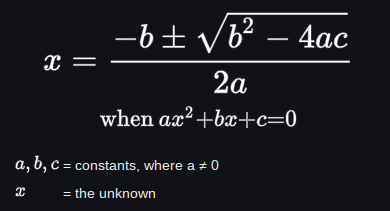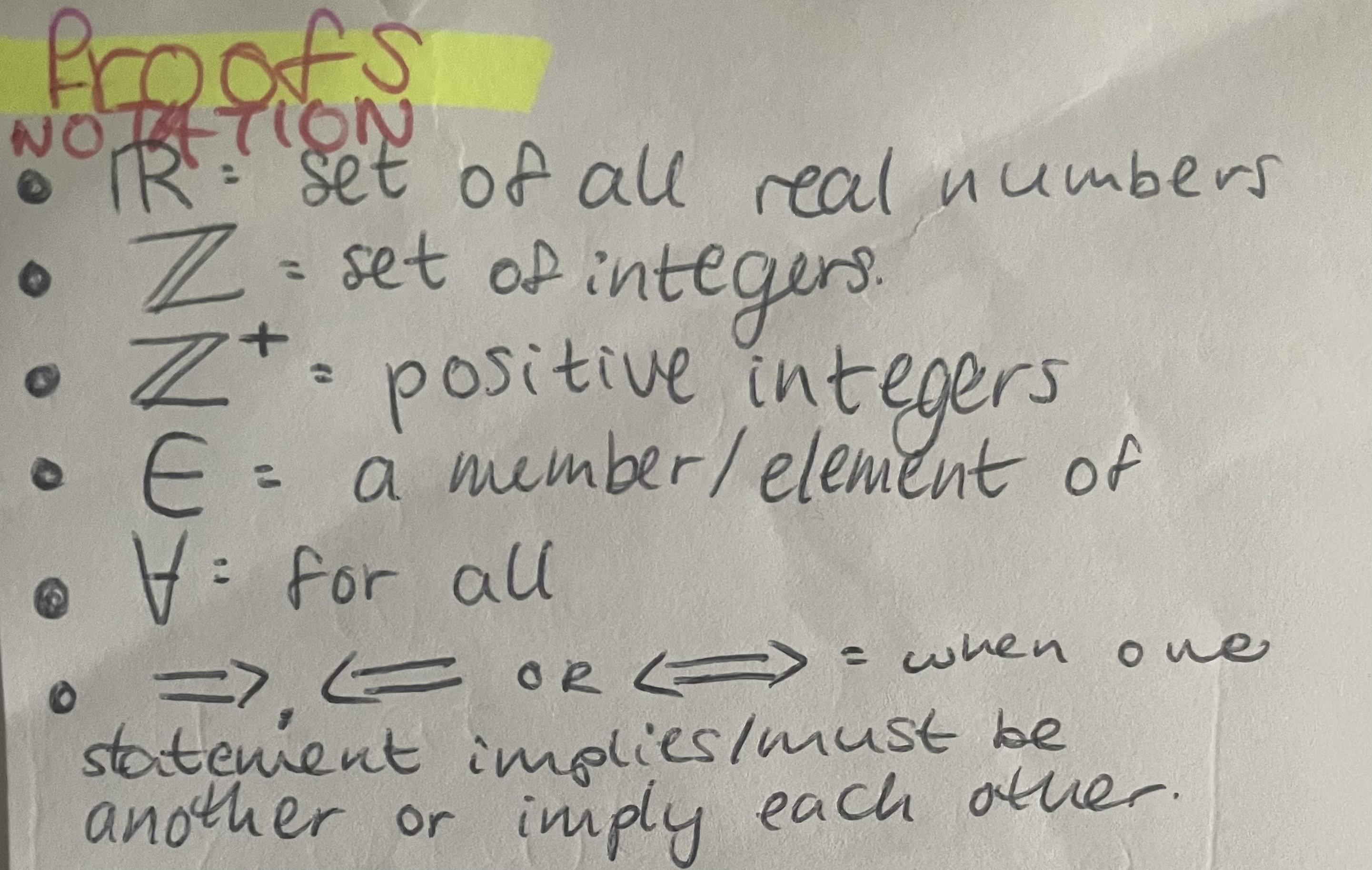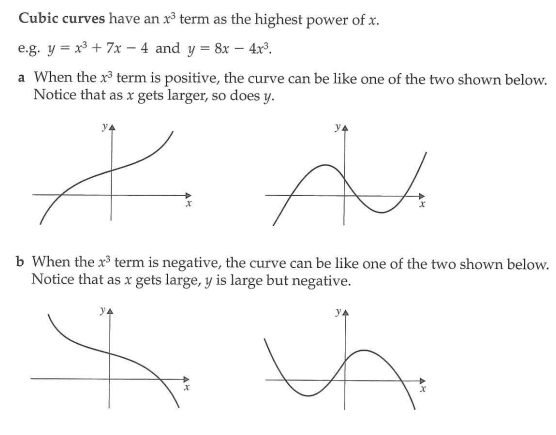WJEC AS Maths Unit 1 (Pure)
1/42
There's no tags or description
Looks like no tags are added yet.
Name | Mastery | Learn | Test | Matching | Spaced |
|---|
No study sessions yet.
43 Terms
Laws of indices

Rules for manipulating surds

Rationalising the denominator
multiply the fraction by the denominator (bottom) with a changed. multiply out using surd rules
discriminant rule for 2 real and distinct roots
b2 - 4ac > 0
discriminant rule for 2 equal real roots/1 repeated real root
b2 - 4ac = 0
discriminant rule for no real roots
b2 - 4ac < 0
methods for finding the nature of roots of a quadratic and the critical values/values which satisfy the inequality made
use discriminant rule for the conditions provided, e.g. no real roots
substitute the values of a, b, and c into the discriminant to form an equation
factorise this equation
to find critical values, draw onto a graph. where the y-values are positive, these are your critical values, e.g. if it’s a positive quadratic with -2 and 2, k< or equal to -2 and k > or equal to 2
completing the square
used to find maxima and minima or solve quadratic equations
minima are found from positive quadratics (a>0). maxima are found from negative quadratics (a<0)
method;
1. half the coefficient of x and place after the x in the bracket
2. subtract this squared
3. add/subtract c
ax2 + bx + c = 0 —> (x+a)2 + b
find maxima or minima; least or greatest value is the one subtracted from y (outside the bracket). when x= the value inside the bracket, with changed sign. maxima or minima= (when x= value, least or greatest value)
1/ least=greatest and 1/greatest=least
methods for solving quadratics
factorisation
quadratic formula
completing the square
quadratic formula

factorising quadratics
use product of ac (a multiplied by c) and sum of b
simultaneous equations
used for finding points of intersection/contact between two lines, a line and a curve or two curves
elimination = either point of intersection of two lines of a quadratic curve and a line
substitution = used for all situations
Elimination; (multiply the equations by suitable numbers to make one variable have the same coefficient. add or subtract the equations (same sign = subtract, different sign = add)
Substitution; make x or y the subject of one of the equations and substitute into the other. factorise new equation to find x and substitute into orgininal equation to find y
solving inequalities
linear inequalities; solve as a regular equation. when multiplying by a negative number, change all signs including the inequality sign
quadratic inequality; factorise, find critical values, sketch. below the x-axis=1 region=1 inequality. above the x-axis=2 regions=2 inequalities.
factor theorem
if f(a)=0 then (x-a) is a factor of f(x)
if (c/a)=0 then (ax-c) is a factor of f(x)
Methods; 1. algebraic division. 2. comparing coefficients
algebraic division; determine what you need to multiply the factor by to find the terms in the quadratic. should divdide to 0 for it to be a factor. remainder is the solution
comparing coefficients; find the coefficients by determining what each of the tersm in the quadratic need to be multipled by, using the factor
Proof notation

Laws for all integers on n

Proof by deduction
Start from known facts or definitions, then use logical steps to reach desired conclusion
Can be proof of log laws and differentiation from first principles
Series of logical steps
Proof by exhaustion
proves a statement is true by checking every possible case separately
Proof by counter-example
used to prove something is false
Need to find 1 example for which a statement does not hold true in order to show that the statement is not always true
sketching quadratic curves
positive x2 u-shaped curve
negative x2 n-shaped curve
sketching cubic curves

sketching reciprocal curves
y=af(x)
a=number of times peak is moved up or down in y
y=f(x)+a
a=number of times minimum is moved up/down
+a=up a times
-a=down a times
y=f(x+a)
a=number of times graph is moved horizontally
+a=moved left
-a=moved right
y=f(ax)
a=how much graph is tretched horizontally
y=f(2x)= halfed
y=f(1/2x)= doubled
y=-f(x)
graph is flipped in y-axis
y=f(-x)
graph is flipped in x-axis
equations of a straightline
y=mx+c
y-y1 = m(x-x1 )
ax+by+c=0
things needed for equation of a straight line
a point on the line
gradient
y-y1 = m(x-x1 )
the equation of a straight line of gradient, m, passing through (x,y)
y-y1 = m(x-x1 )
gradient of a line jpining two given points
gradient, m = y2 - y1 / x2 - x1
finding the lenght of a line jpining tqo given points
√(x2 - x1 )2 + (y2 - y1 )2
midpoint of a line joining two given points
M = (x1 + x2 / 2, y1 + y2 / 2)